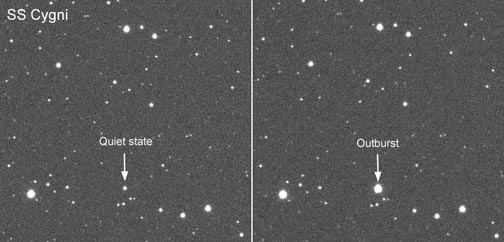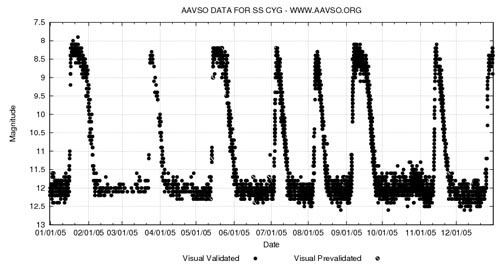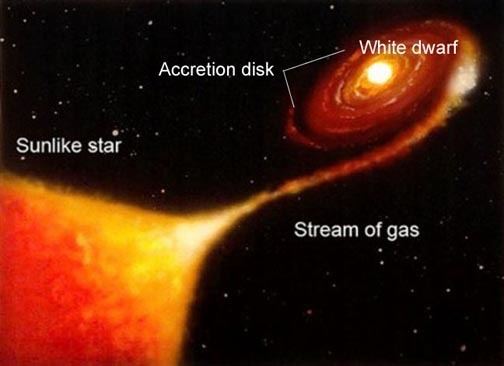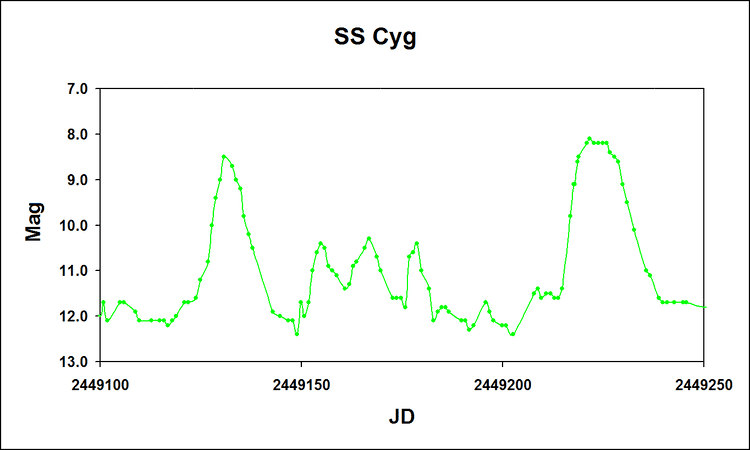 | ||
Chrome ss cygni
SS Cygni is a variable star in the northern constellation Cygnus (the Swan). It is perhaps the prototype dwarf nova, meaning that it undergoes frequent and regular brightness outbursts - every 7 or 8 weeks in the case of this much-observed example. SS Cygni is often classified as a U Geminorum type dwarf nova. However, the maxima of SS Cygni are typically brighter than those of U Gem, rising from 12th magnitude to 8th magnitude for, typically, 1–2 days. The northerly declination of SS Cygni (about 44° N) makes the star almost circumpolar from European and North American latitudes, allowing a large proportion of the world's amateur astronomers to monitor its behavior. Furthermore, since the star lies against the rich backdrop of the Milky Way band, the telescope field of view around SS Cygni contains an abundance of useful brightness comparison stars.

SS Cyg, like all other cataclysmic variables, consists of a close binary system. One of the components is a red dwarf-type star, cooler than the Sun, while the other is a white dwarf. Studies suggest that the stars in the SS Cyg system are separated (from surface to surface) by "only" 100,000 miles or less. In fact, the stars are so close that they complete their orbital revolution in slightly over 6 1/2 hours. The inclination of the system has been calculated to be about 50 degrees, yielding a respective component mass of 0.6 solar mass (M☉) for the white dwarf primary star and 0.4 M☉ for the red dwarf secondary star.

Astronomically speaking, SS Cyg is also fairly close by. Originally thought to be at a distance of 90 to 100 light years from its Earth-bound admirers, its distance was revised in 1952 to about 400 light years. In 2007 Hubble Space Telescope data indicated a distance of about 540 light years, though this value caused difficulties with the theory of dwarf novae; this was checked during 2010—2012 using radio astrometry with VLBI, which yielded a smaller number (114 ± 2 parsecs or 372 ± 7 light-years). This value is much more in accord with the old (≈400 light-year) value, and it removes completely the difficulties the larger HST distance made for the theory of dwarf novae.




